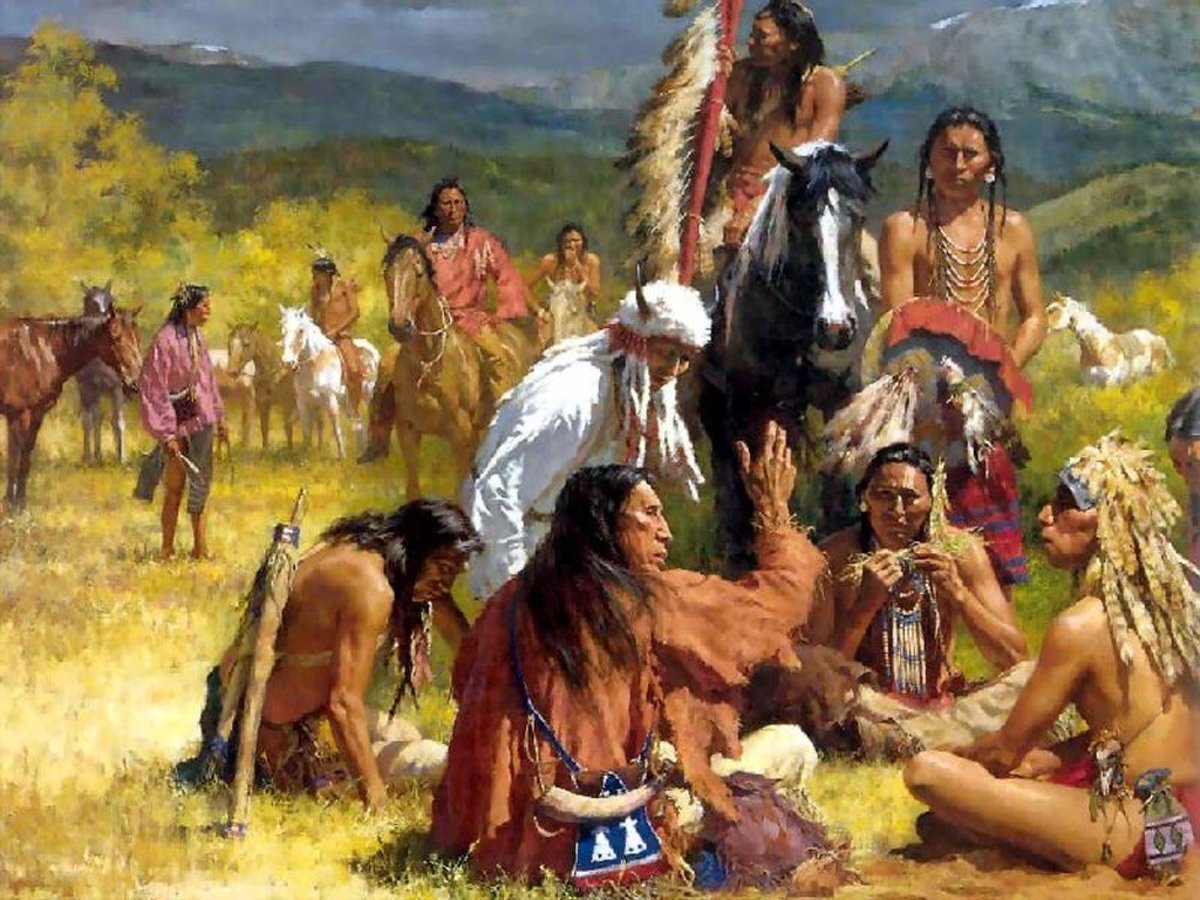India is a country of diverse cultures and traditions, with a wide variety of indigenous tribes that have lived on the subcontinent for centuries. These tribes represent the oldest threads in the cultural fabric of India, preserving ancient customs, languages, and ways of life. This article details the interesting history and unique features of India’s five oldest tribes.
The Santhal tribe
Accompanied by traditional musical instruments such as ‘tamak’ and ‘madal’, it reflects the deep connection between tribes and nature. Santal’s art showcases their craftsmanship and creativity in beautiful paintings, ceramics, and intricately designed ornaments depicting scenes from everyday life, religious beliefs, and cultural motifs.
The Santars have a tight-knit community structure organised in clans or lineages known as “haprams”. These clans play an important role in maintaining social harmony and resolving intra-tribal conflicts. Traditionally, Santal lived in a small village called ‘Palha,” consisting of mud and thatched houses.
The backbone of Santal’s economy is agriculture, and subsistence farming is the main occupation. They grow crops such as rice, maize, sorghum, and vegetables but also raise livestock and fish to meet nutritional needs. Despite the challenges posed by modernization and cultural assimilation, the Santal have made a concerted effort to preserve their traditions and heritage.
Cultural festivals such as ‘Solai’ and ‘Baja’ are celebrated with grandeur and showcase the country’s rich cultural heritage. The Santal people’s continued presence and commitment to their traditions is a testament to their resilience and the importance of preserving indigenous cultures. They embody India’s ancient roots and contribute to the vibrant structure of the country’s diverse heritage.
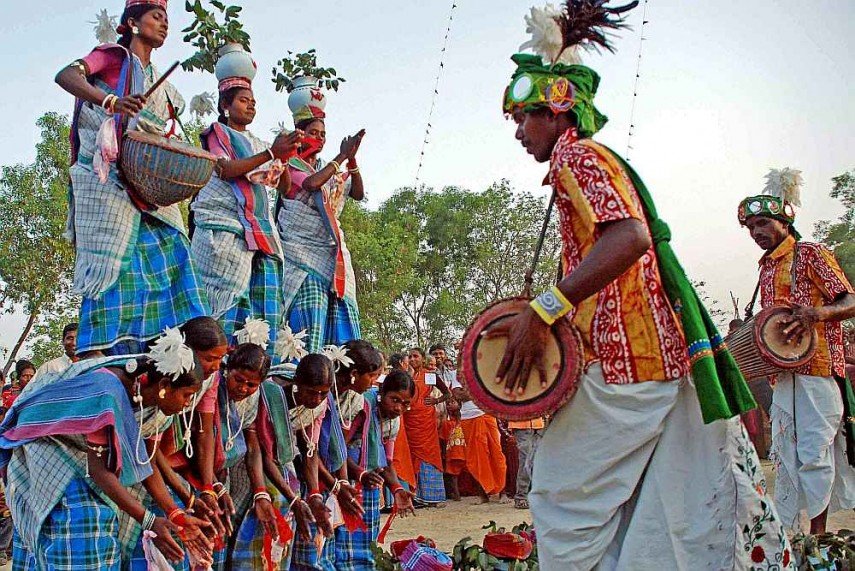
The Munda tribe
The Munda people with ancient roots are concentrated mainly in the eastern states of Jharkhand, Orissa, West Bengal, and Bihar. As one of India’s oldest tribes, the Munda people have a rich cultural heritage and have greatly contributed to the diversity of the region. The Munda people have their own language known as Mundari, which belongs to the Australian language family. This language provides a strong connection to their ancient origins and is an integral part of their identity. Despite the influence of neighbouring languages, the Mundari language was vigorously preserved by the tribe.
The Munda people have a deep spiritual connection with nature, and their traditions and beliefs reflect this connection. They practise animism and worship different natural elements such as rivers, mountains, and trees. Rituals and ceremonies are performed to honour and bless gods and ancestors. Arts and crafts are an integral part of Munda culture. He is well versed in various traditional crafts such as pottery, weaving, and basket weaving. The intricate designs and patterns in her artwork often incorporate elements of nature, tribal folklore, and mythological themes.
The main occupation of the Munda people is agriculture. They engage in both subsistence and commercial agriculture, growing crops such as rice, maize, millet, and legumes. Their farming practises reflect a deep understanding of the earth and its seasonal cycles. The Mundas have a compact social structure organised in clans or lineages called ‘Kurhi’.
A traditional village council, known as a ‘sasan’, assists in the administration and provides advice on various social and cultural issues. Despite modernization and external influences, the Munda people have taken steps to preserve their cultural heritage. Festivals and celebrations such as ‘sarfur’ and ‘kalam’. These are important occasions for tribes to gather and showcase their traditional dances, music, and rituals. These events act as a platform to pass on the traditions of our predecessors to the younger generation.
The Munda people’s deep ties to the land, artistic expression, and commitment to cultural heritage preservation form a vibrant mosaic of India’s diverse tribal communities. These testify to the resilience and cultural richness of ancient Indian tribes.
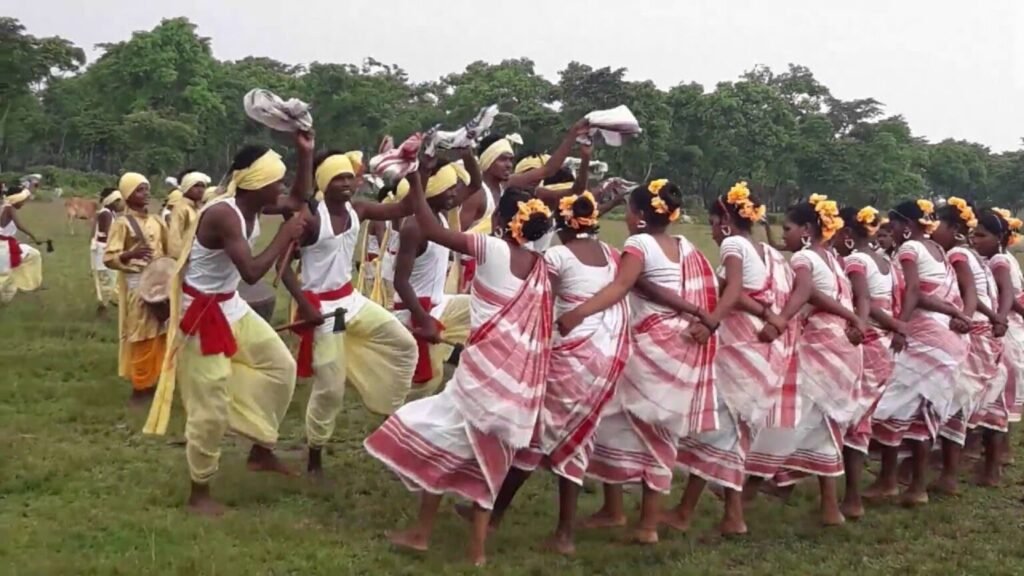
The Bhil tribe
As one of India’s largest indigenous communities, the Bhil people have a rich history and a significant presence in various states such as Rajasthan, Gujarat, Madhya Pradesh, and Maharashtra. The Bhil people, an ancient tribe, have played an important role in shaping the cultural diversity of the region.
The Bhil people have a unique cultural identity that is deeply rooted in traditions and customs. Their language, known as Bhili, belongs to the Bhil family and serves as a means of communication within the community. Bhili has many dialects and plays an important role in preserving ancient heritage. Artistic expression is an integral part of Bhil culture.
This tribe is famous for its exquisite art forms, especially traditional painting. Bhil’s paintings are characterized by intricate patterns, bright colors, depictions of nature, mythological stories, and everyday life. These images serve as visual narratives and reflect the tribe’s rich folklore and spiritual beliefs. The people of Bhil have a close relationship with nature and worship various gods associated with the elements, animals, and natural phenomena. Their religious practice combines animistic beliefs with elements of Hinduism.
Festivals such as Holi, Diwali, and Navratri are celebrated with great enthusiasm with unique rituals, dances, and music. Agriculture is the backbone of the Bhil community. They grow crops such as millet, corn, wheat, and legumes. Bhil’s people are familiar with the local flora and fauna and use traditional farming techniques that have been passed down from generation to generation. The Bhil have a strong sense of community and connection. They live in compact colonies and make decisions collectively.
Village elders, so-called ‘panches’, play an important role in resolving conflicts and maintaining social peace in their communities. Despite the challenges of modernization, the Bhil people have struggled to preserve their cultural heritage. Efforts are being made to promote the Bhili language and Bhili literature, as are efforts to showcase Bhil arts and crafts on regional and national platforms.
The tribe takes pride in passing on their ancestral traditions, dances, and music to younger generations. The Bhil people’s rich cultural heritage, artistic expression, and harmonious relationship with nature testify to their deep connection to their ancestral lands. They embody the enduring spirit of India’s indigenous tribes and contribute to revitalizing the country’s cultural diversity.

The Gond tribe
As one of India’s oldest and largest indigenous communities, the Gonds have a rich cultural heritage spread across central India. With deep ancestral ties to the land, Gonds have shaped the cultural landscape of regions such as Madhya Pradesh, Chhattisgarh, Maharashtra, and parts of Orissa. The Gonds have their own language known as Gondi, which belongs to the Dravidian language family. The language serves as a means of communication within the community and plays an important role in preserving ancient traditions and folklore.
The Gondi language has distinctive dialects that reflect the rich cultural diversity of the tribes. Art occupies a special place in Gondang culture. The Gondi people are known for their vivid and intricate tribal art, featuring bold lines, intricate patterns, and bright colours. These fascinating works of art depict different elements of nature, mythological stories, and the daily lives of the people of Gond. Gondi’s art has become internationally recognised and a source of tribal pride.
The Gonds have a strong spiritual connection with nature and worship temples of gods associated with natural elements such as mountains, rivers, and forests. Rituals are performed to obtain the protection of these gods. The people of Gond also held great respect for their ancestors, and their ceremonies often included offerings and homages to their ancestors. The main occupations of the Gonds are agriculture and forestry. They are engaged in subsistence farming and grow crops such as millet, rice, legumes, and vegetables.
The people of Gond have extensive knowledge of the local flora and fauna and utilise traditional knowledge of sustainable resource management and herbal medicine. The Gonds have a rich musical and dance tradition. Communities gather at festivals and celebrations to showcase unique dance forms such as the Karma Dance and the Saira Dance. These dances are accompanied by traditional musical instruments such as mandarin and bana.
Despite the challenges of modernization and social change, the Gonds strive to preserve their cultural heritage. Efforts have been made to promote the language and literature of Gondi, and steps have also been taken to support Gondi artists and their traditional art forms. The tribe takes pride in passing on their ancestral knowledge, customs, and rituals to younger generations.
The Gonds’ close relationship with nature, their rich artistic expression, and their rich cultural traditions testify to their resilience and the importance of preserving their indigenous cultures. They contribute to India’s diverse tribal heritage and embody the country’s ancient roots and cultural richness.
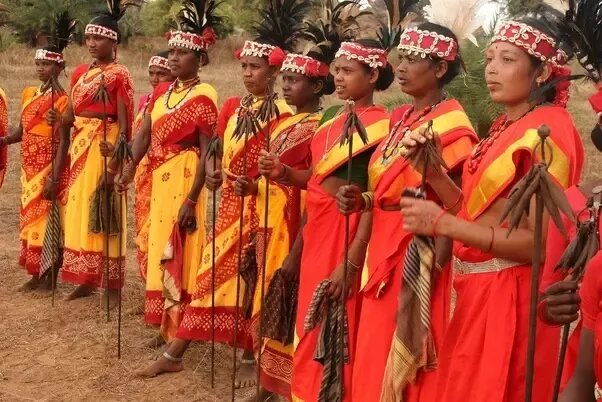
The Jawara tribe
An indigenous community in India’s Andaman Islands, the Jarawa people have a unique, ancient cultural heritage. The Jarawa roots go back thousands of years and maintain a harmonious relationship with the pristine nature of the islands. The Jarawa are known for their unique language, which is unrelated to any other language in the world. Their language reflects their isolation and demonstrates the preservation of ancient traditions and customs. The Jarawa primarily communicate in their mother tongue, which further strengthens their cultural identity.
The Jarawa live in the dense forests of the Andaman and have a deep connection with nature. They live by hunting, gathering, and fishing. Their deep knowledge of the local flora and fauna allows them to live in harmony with their environment. The Jarawa people have unique knowledge of the island’s ecosystem and use traditional wisdom to manage resources sustainably. The Jarawa have a rich tradition of oral and folkloric knowledge passed down from generation to generation. These stories tell their histories, myths, and beliefs and provide insight into their cultural heritage. Their stories often revolve around their connection to nature, the spirits that inhabit the land, and the importance of social harmony.
Due to their remote location and limited contact with the outside world, the Jarawa lived a relatively isolated life until recently. Their lifestyle and cultural practises are largely unaffected by modern times. The resilience of the tribes to maintain their way of life demonstrates a strong sense of identity and a bond with ancestral customs. In recent years, efforts have been made to protect the rights, dignity, and cultural integrity of the Jarawa people. Strict standards and measures are in place to ensure that the soil is isolated and protected from outside disturbances.
Organizations and authorities work together to strike a delicate balance between preserving the Jarawa’s unique culture and providing them with the support they need for their well-being. The Jarawa are a living testament to the enduring presence of indigenous communities in India. Their ancient traditions, languages, and sustainable way of life provide valuable insight into humanity’s deep relationship with nature. Respecting their cultural heritage and protecting their rights are fundamental steps in promoting inclusiveness, diversity, and preserving Indigenous knowledge for future generations.
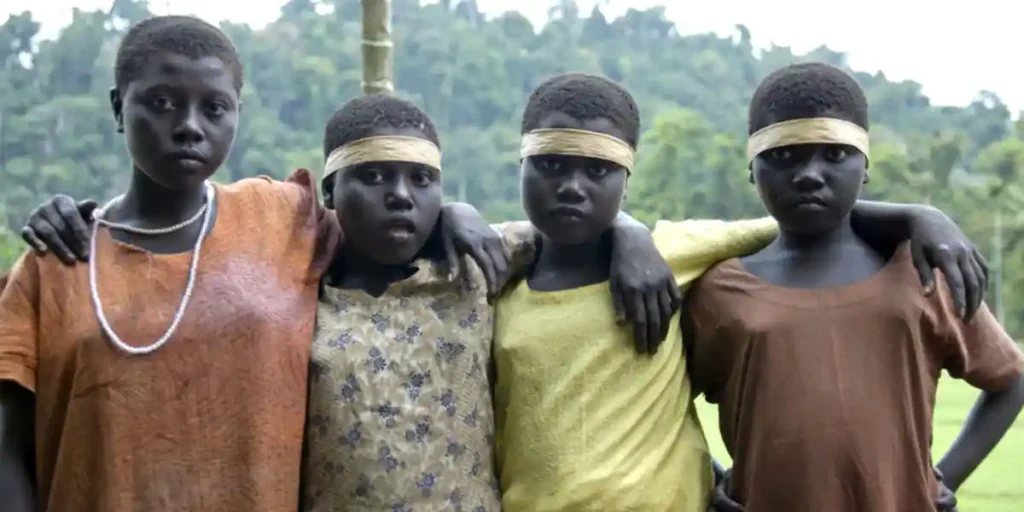
8 Insider Secrets for a Successful and Stress-Free Air Travel Experience – Trybe News

